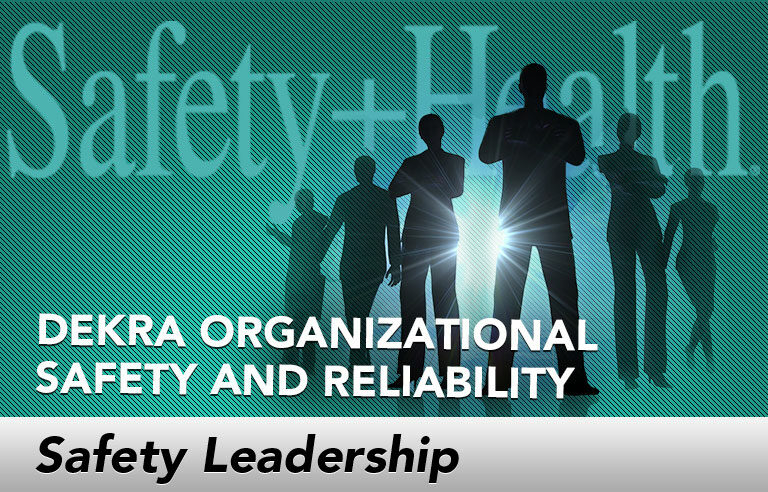Safety Leadership: Acceptance of ‘near compliance’ at work

Editor’s Note: Achieving and sustaining an injury-free workplace demands strong leadership. In this monthly column, experts from global consulting firm DEKRA Insight share their point of view on what leaders need to know to guide their organizations to safety excellence.
If you’re like a lot of people, you tend to drive faster than the speed limit, especially on the highway. A recent study1 found that almost half of U.S. drivers have driven 15 mph over the speed limit in the past month – and 1 out of 5 drivers polled believe it is acceptable to do so.
Why is that?
The answer reveals something important about individual acceptance of safety rules on the job: The longer we perform an at-risk behavior without a negative outcome, the more we’re convinced that we’re not going to get hurt by that behavior. Extend that reasoning to every individual in your organization and you can see the exposure cost of low compliance increases exponentially.
Think about speeding when you drive. To get a negative outcome from speeding – getting a ticket, for example – a few things have to happen. First and foremost, speeding. But that’s not enough to have a bad outcome. To get a ticket, it also takes:
- A police officer to be in the immediate vicinity
- That officer to be able to detect your speed
- That officer to be free to pull you over
- Your car likely being the fastest in the group going by
- That officer being in the mood to stop you
Of these six factors, as the driver, you control only one: speed. Once you speed, the outcome is out of your control. If any of these six factors is missing, the negative outcome is avoided. This is why, in the workplace, we can have so much near compliance of safety rules yet so few negative outcomes.
How cognitive dissonance factors into near compliance
Complicating matters is the principle of cognitive dissonance – or the discomfort you feel when your behavior doesn’t match your attitude. If your attitude is that going 5 mph over the speed limit is not acceptable, you’re going to adjust your behavior and slow down to match that attitude. Further, if you change your behavior to drive 6 mph over the speed limit and you don’t suffer a negative outcome, your attitude eventually will change to match your new behavior.
The problem with near compliance is that cognitive dissonance works against safety. We don’t feel uncomfortable going a little faster than the speed limit. In fact, our attitude is aligned exactly with our behavior – although we have put ourselves in an at-risk situation by not fully complying with the stated speed limit.
How to address the issue
The first step in addressing individual acceptance of near compliance on the job is education. You must educate the individual. Each individual must ask himself or herself:
- Why do I knowingly vary from safety standards?
- Do I fully understand the reason behind the standards and limits?
- Do I understand that I lose control of my safety once I place myself at risk?
- What factors in my near-compliance situations at work are usually missing that allow me to not have a negative outcome?
- How could I remain in compliance and still achieve a positive outcome (i.e., faster production)?
Once you have these answers, then look to change your behaviors to better serve your positive outcomes. Our attitudes will follow.
You only need to look back at the example of speeding to know the payoff of this approach: Once you change your behavior to routinely go the speed limit, cognitive dissonance will make it more difficult for you to speed. And if you don’t speed, you eliminate the one factor you control, almost guaranteeing a positive outcome of no speeding ticket.
Now, if we could just apply these same principles to backseat driving.
Reference
1. “2014 Traffic Safety Culture Index,” AAA Foundation for Traffic Safety
This article represents the views of the author and should not be construed as a National Safety Council endorsement.
 Don Groover, CIH (retired), CSP, is senior vice president of DEKRA Insight. Groover develops solutions that leverage the latest technology and advancements to improve safety performance in client organizations.
Don Groover, CIH (retired), CSP, is senior vice president of DEKRA Insight. Groover develops solutions that leverage the latest technology and advancements to improve safety performance in client organizations.
Direct to your inbox: Sign up to be notified in email about new Safety Leadership columns.
Post a comment to this article
Safety+Health welcomes comments that promote respectful dialogue. Please stay on topic. Comments that contain personal attacks, profanity or abusive language – or those aggressively promoting products or services – will be removed. We reserve the right to determine which comments violate our comment policy. (Anonymous comments are welcome; merely skip the “name” field in the comment box. An email address is required but will not be included with your comment.)

